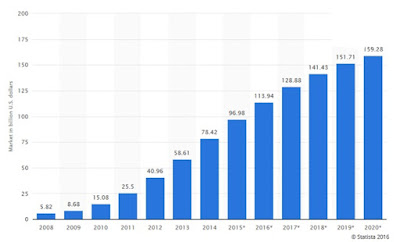Twitter Feed
Why the Cloud? Processing, Exploitation and Dissemination
So why is the intelligence community so interested in cloud computing? Three letters: PED (Processing, Exploitation, Dissemination). Take these two real life examples from the publishing industry. Jim Staten of…
World Summit of Cloud Computing: “Enterprise Cloud Computing” work group
To leverage attendees of the World Summit of Cloud Computing, a kick-off meeting of the “Enterprise Cloud Computing” work group will be held near Tel Aviv, Israel on December 3,…
Cloud Package Management
In his post “Missing in the Cloud: package management“, Dave Rosenberg highlights a critical issue in the adoption of cloud computing by government agencies. “I dare say that a standard…
PlugIntoTheCloud.com
Information Week has just launched PlugIntoTheCloud.com as their cloud computing destination. In his Non Linear Thinking blog, Bill Martin calls it a movement aimed at “providing a source and forum…
Is the cloud computing hype bad?
From Gartner “Why a little cloud hype might be useful“: “It’s too simplistic to say cloud hype is bad . If we are technically expert is might irritate us with…
Stop the FUD (Fear, Uncertainty and Doubt) !!
Dan Morrill! Count me in !! In his excellent article, “Cloud Computing is Scary – But the FUD Has to Stop“, Dan makes some excellent points: It is time to…
IBM, Microsoft and Google
On October 6th, IBM launched their cloud services initiative. This is a: “[C]ompany-wide initiative that extends its traditional software delivery model toward a mix of on-premise and cloud computing applications…
Government in the Cloud
Back in mid-September, there was quite a thread in the Google Cloud Computing Group on the use of cloud computing by the federal government. Some of the interesting comments were:…
CloudCamp Partners With SOA-R !!
I’m proud to announce that the final SOA-R Cloud Computing Education Event will be held in collaboration with CloudCamp. Now dubbed CloudCamp:Federal, the event will be held as an “unconference” to help…
Federal Cloud Computing Wiki
With the fast growing interest in cloud computing, the Federal Government community has established a Federal Cloud Computing Wiki. This wiki is managed by Dr. Brand Niemann, Senior Enterprise Architect…
- Enable cloud service arbitrage based on cost, performance or operational need;
- Help companies migrate operations to the cloud and assist with staff augmentation and training;
- Provide cloud service auditing and SLA monitoring services;
- Help in focusing and managing organizational cloud service demand;
- Provided toolsets to assist in the migration and integration of enterprise applications; and
- Help in change management and the selection and integration of other managed services.
By automating and operationalizing the governance of cloud services, CSBs can efficiently multi-source services and augment them with third party metering and monitoring. Using CSBs, organizations also accelerate their transition to hybrid IT models. This marketplace is typically segmented type of services: cloud brokerage and cloud brokerage enablement, wherein cloud brokerage enablement is further segmented into internal and external brokers. When used internally, cloud enablement platforms helps enterprises adopt the new hybrid IT and multi-sourced operating model. By building organic expertise, companies can personalize IT service consumption and unify
IT service delivery through the use of a corporate self-service store, a dynamic service marketplace, and continuous delivery. This centralized, supply chain approach unifies the order, execution, and management of multi-sourced solutions across legacy and cloud resources, by centrally delegating and tracking execution.
(This post was brought to you by IBM Global Technology Services. For more content like this, visit Point B and Beyond.)
( Thank you. If you enjoyed this article, get free updates by email or RSS – © Copyright Kevin L. Jackson 2016)
Cloud Computing
- CPUcoin Expands CPU/GPU Power Sharing with Cudo Ventures Enterprise Network Partnership
- CPUcoin Expands CPU/GPU Power Sharing with Cudo Ventures Enterprise Network Partnership
- Route1 Announces Q2 2019 Financial Results
- CPUcoin Expands CPU/GPU Power Sharing with Cudo Ventures Enterprise Network Partnership
- ChannelAdvisor to Present at the D.A. Davidson 18th Annual Technology Conference
Cybersecurity
- Route1 Announces Q2 2019 Financial Results
- FIRST US BANCSHARES, INC. DECLARES CASH DIVIDEND
- Business Continuity Management Planning Solution Market is Expected to Grow ~ US$ 1.6 Bn by the end of 2029 - PMR
- Atos delivers Quantum-Learning-as-a-Service to Xofia to enable artificial intelligence solutions
- New Ares IoT Botnet discovered on Android OS based Set-Top Boxes



